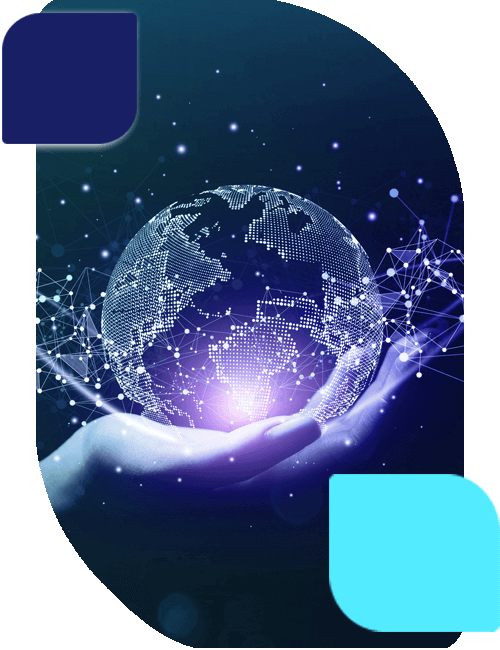It’s understandable why the idea of employee tracking can make some people nervous. The thought of being monitored can feel invasive, and many employees may worry about the implications it could have on their privacy and autonomy. Similarly, businesses may be hesitant to implement employee tracking systems out of fear of being seen as “big brother” and risking employee trust.
But before we dismiss employee tracking altogether, let’s consider the potential benefits. When done right, some types of employee tracking can improve workplace safety, increase productivity, and even boost employee happiness.
In this article, we explore how employee tracking software – if used correctly – can be a tool used for good. We also consider how to avoid misuse.
Focusing on safety
The right employee tracking system can help to ensure everyone’s safety. For example, on a construction site, employees can be alerted so they don’t stand underneath ongoing work. Or they can be given proximity alerts when operating heavy machinery such as a forklift, or if reversing a lorry.
Employee tracking software can also help reduce response times to accidents or emergencies, improving outcomes for injured employees. For example, a real time location system such as Sense can send an SOS if a fall is detected, and direct help to the victim’s location. Or, it can alert users if air quality is poor, or if hazardous chemicals are present nearby. With a system like Sense, fire alerts from alarm systems can be sent directly to employee devices, and provide a safe evacuation route. Similar use cases apply in factories, warehouses, medical environments, as well as retail stores.
Employee tracking software can also help to keep employees safe from a legal perspective. It can help to prove regulations were adhered to; that processes were followed; and the timescale work was completed in. It’s important to also consider mental health and wellbeing. Employee tracking software can help ensure regular breaks are taken, and that employees aren’t subject to poor working conditions.
Improving safety in workplaces, from a physical, mental, and legal perspective is very important and is a very valid reason to use employee tracking software.
Improving site security
Certain workplaces are obliged to take physical security very seriously (for example a prison or airport).
With employee tracking software, security teams can be alerted and directed to incidents without delay. This can help to prevent injury to employees, or loss/damage to equipment. Dealing with incidents quickly will also minimise impact on customer experience and reduce disruption to services.
Employee tracking software can also be linked to security alarm systems, to request third party assistance, or trigger evacuation protocols.
Enabling communication
Communication across large sites can often be contextual and can also rely on knowledge of an employee’s location, time available, tasks completed and outstanding tasks.
Combining a communication system with some form of employee tracking software can provide that context without the need for unnecessary questions or disruptions, such as messages asking “how long will you be?” or “is the ventilator available yet?”. With the right tracking and automation measures in place, employees can get straight to the point of their communication – even using location or status information to instantly communicate with the individual who is in the most appropriate location, or who has the availability to act on the request being sent.
This can lead to time savings, reduction of errors (which can add up to cost savings) alongside improved customer/patient/employee experience.
Providing a basis for coordination
Following on from communication, teams can coordinate themselves without the necessity of communication in certain circumstances.
For example, if a task list is shared by a team, some types of employee tracking software can demonstrate this and employees can then move between tasks without the need to check in with the rest of their team about what needs to be done next. That information is already available to them. This is especially helpful for teams who work remotely, or across several locations.
Teams can also coordinate based on the location of employees. For example, automated task assignment can assemble relevant task lists for employees as they enter an area, or direct employees to an area where the next set of tasks are waiting, all whilst considering what the rest of the team are doing and what time and skill sets are available.
Ways to respect privacy
It’s important to consider that it’s not always sensible or appropriate to use employee tracking software. And certain elements may be highly undesirable indeed – employees are likely to be wary of any type of tracking system that has unnecessary access to a camera or a microphone, for example.
You can solve this by using a purpose-built RTLS system like Sense, which does not require a mobile phone, and which helps employees feel like their privacy is being respected. You can also mitigate some employee concerns with features such as a “do not disturb” mode, which can be enabled to block tracking and communication. This allows employees to unwind fully during breaks, or remove distractions during intense periods of concentration. Of course, you may wish to consider giving staff who are ‘on call’ an “emergency override”, which would still contact them in the event of an emergency, even if do not disturb is enabled.
It’s also possible to disable employee tracking software based on location, such as in staff break zones, or around washrooms. Intruding on employee privacy in those areas can lead to lots of problems, so it’s best to avoid tracking those areas unless necessary for critical reasons.
Conclusion
Not all forms of employee tracking are bad – and many organisations seek systems to help them make better use of real-time location data, in order to protect employees and boost productivity.
The Sense platform combines real-time location information employee tracking software with functionality that improves safety and security, whilst enabling communication and helping coordinate teams.






